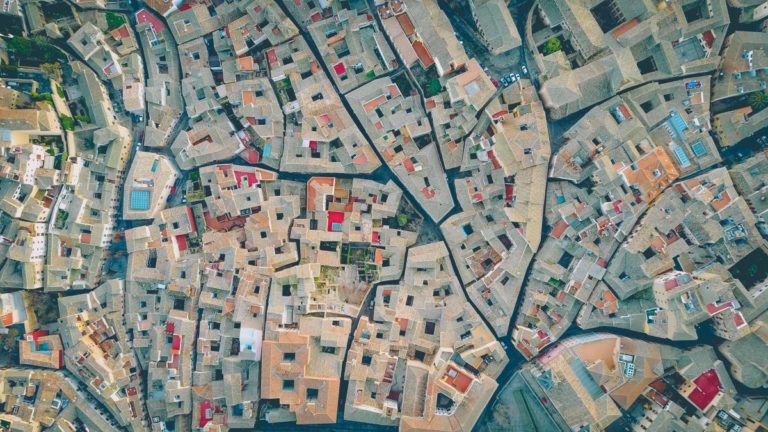3 Reasons Why You Should Use Drones for Surveying
As the world’s population continues to grow, the human footprint continues expanding into more and more remote regions.
Where challenging terrain and environmental conditions once prevented people from building structures, progress marches on in opening new areas to development, thanks to advancements in science and engineering.
However, this growth is not always easy, and surveyors are one of the first groups of professionals challenged by this expansion.
Surveying in remote areas can be extremely difficult.
Simply reaching the location of a remote section of the globe is a dangerous, time-consuming, and expensive affair.
Difficult-to-reach regions don’t necessarily mean venturing into the depths of the Amazon rainforest either. Surveying the damage created by a natural disaster, for example, poses just as much trouble, if not more, for survey teams.
So, what can survey professionals do to lower the risk of danger and decrease costs to complete projects in rugged and remote regions?
The answer is simple: aerial surveys with drones provides the best solution to this problem.
Exploring even a few of the advantages drones offer over ground-based assets proves why everyone involved in land surveys needs to consider adding the use of drones to their capabilities.
Safety First
The benefits of UAV technology to complete complex surveys make using drones an easy sell.
First and foremost, the safety of survey personnel is of the utmost concern for anyone performing surveys in remote or dangerous areas.
For example, building in the wilderness or after a natural disaster exposes ground-based survey teams to a wide range of hazards. In most cases, drones launch from outside of a dangerous sector and provide survey-level accurate data without any risk to the survey team.
Exposure to fires, toxic fumes, disease, and potentially radioactive material is all avoided, and without sacrificing the quality of a survey team’s products.
With the proper equipment, aerial survey methods using drones gathers reliable data that planners use to build or repair structures.
Some estimates show drone-based surveys to require only one-fifth of the time necessary for ground-based surveys.
Faster Results
In addition to being dangerous, surveys taking place in remote regions, are often very time-consuming as well.
Consider the survey needs of company responsible for an oil and gas pipeline. It takes considerable time for a ground-based team to move personnel and equipment across expansive tracks of wilderness.
Picking up a theodolite (a surveying instrument) and moving across long pipelines can take days or even weeks, depending on the section to be surveyed.
In contrast, drones cover the same distance in only a fraction of the time. Some estimates show drone-based surveys to require only one-fifth of the time necessary for ground-based surveys.
Saving Time Saves Money
Every operation is concerned with costs, and expenses continue to rise the longer a ground-based team needs to complete a survey.
When you factor in the human resource costs, manually operated equipment, and in some cases, pricey assets such as helicopters, even adding a day or two to a survey mission can run an operation over budget.
A drone-based survey can be completed with a small team or even just the pilot in many cases.
Requiring fewer people means lower costs in the form of salaries, medical insurance, and other benefits. In most areas, Many drone service companies are available as independent contractors, thus lowering costs and liability even further.
A final, and often overlooked benefit, is the use of less equipment.
A decent drone with a commercial-grade camera is the primary tool needed to conduct aerial surveys. Software eventually processes the information, but isn’t required in the field, and can be handled in the comfort of an office or other secure location.
For centimeter-level accuracy, a few ground control points might be required, but for the most part, the drone is all a surveyor needs. This reduction in equipment also contributes to saving you money.

Drone Surveying: Bringing It All Together
The work of professional surveyors is difficult under normal conditions, let alone in remote areas.
Ground-based teams continue to face more challenges as the human population expands.
As the surveyors push into more remote locations, the cost and time needed to complete projects increases, all while also exposing personnel to more danger.
Drones offer a ready-made solution that addresses all three of these concerns. Surveying teams and planners not currently using drones are missing out on the tremendous potential of the technology.
So, which drone is right for you? And, how do you get started? Do you hire out or bring your drone program in-house?
At Consortiq, we help you find a better way with drones, from consultation and program implementation to actually doing the work for you.
Ready to learn more? Just complete the form below to schedule a risk-free consultation!

David Daly - Contributing Author
David Daly, is an award-winning photographer/writer and licensed (FAA) Commercial sUAS pilot. A graduate of the United States Naval Academy, David is a former Marine Corps officer with a BS in Oceanography and has earned his MBA from the University of Redlands. David has worked for Fortune 100 companies and has a background in aerospace, construction, military/defense, real estate, and technology.


